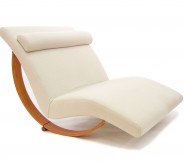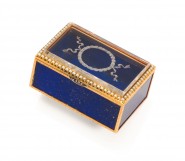Lot #38 - John Olsen
-
Auction House:Bonhams Australia
-
Sale Name:Important Australian Art
-
Sale Date:11 May 2022 ~ 7.30pm (AEST)
-
Lot #:38
-
Lot Description:John Olsen
(born 1928)
Lily Pond at Humpty-Doo, 2004
oil on linen
182.0 x 200.0cm (71 5/8 x 78 3/4in).
signed and dated lower left: 'John Olsen / 04'; titled verso: 'Lily Pond at Humpty Doo / N.T.'
EXHIBITED: John Olsen: Recent Works Tim Olsen Gallery, Sydney, 19 October - 6 November 2004; Pulse: Paintings by John Olsen 1961-2005, TarraWarra Museum of Art, Healesville, Victoria, 29 May - 23 October 2005 (illus.); John Olsen: The You Beaut Country, The Ian Potter Centre, National Gallery of Victoria, Melbourne, 16 September 2016 – 12 February 2017; Art Gallery of New South Wales, Sydney, 10 March – 12 June 2017; John Olsen Figures and Landscape, Olsen Gallery, Sydney, 18 April–6 May 2018, cat. 15; Sydney Contemporary 2019, Gow Langsford Gallery at Sydney Contemporary, Sydney, 12-15 September 2019 -
Provenance:Olsen Gallery, Sydney (label attached verso); Collection of James and Jacqui Erskine, Sydney; Private collection, Sydney
-
References:Deborah Edwards & David Hurlston, John Olsen: The You Beaut Country, National Gallery of Victoria, Melbourne, 2016, p. 34-35 (illus.); Ken McGregor & Jenny Zimmer, John Olsen: Journeys into the You Beaut Country, Thames & Hudson, Melbourne, 2016, p. 283 (illus.), 316; Steve Meacham, 'Paintings that find words for the land', The Sydney Morning Herald, Sydney, 13 October 2004
-
Notes:During the course of John Olsen's illustrious career the theme of the unassuming lily pond continually stimulated his imagination. As a self confessed 'Explorer' Olsen travelled extensively, transforming the many corners of the Australian outback into his own unique vision, built on a sense of place. He first fell in love with the tropical lily ponds on a trip to far North Queensland in the early 1970s. These deep visual memories provided an enduring wellspring of creativity which continued to influence his subjects throughout his career. In an interview with the Deborah Hart when compiling the 1991 monograph, John Olsen discusses his feelings about the environment which had become synonymous within the artists' oeuvre: 'Working on these projects really altered my way of looking at things because I could see not only bird life but a whole range of biology. It is so staggeringly fragile. You have to have the estuaries and the water lands to have the birds, the frogs, the crustaceans. In David Attenborough's film series he indicates that life really began in the water and after thousands of years creatures left the water. There is still in those beautiful lily ponds that whole kind of structure that is the beginning of life'.1 In 2004 when Olsen created Lily Pond at Humpty Doo, he was armed with a vast knowledge of this environment and four decades of practice. Exhibited that same year, the present work was hailed a triumph, with promising reviews: 'Lily Pond at Humpty-Doo, includes some of the artist's dominant themes. "John has spent a lot of time in the Northern Territory. He's absolutely fascinated by the torrential weather, the way everything can be so dry and the there's a storm and suddenly life bursts out. Frogs appear from under the ground, fish start to swim. A whole landscape of rivers and estuaries comes to life. "Compare this work to Five Bells, the large Olsen which hangs in the foyer of the Art Gallery of NSW. That is about Sydney Harbour being the centre of life. It's a similar composition, but this one is based on the topography of the Northern Territory. This painting represents the mood of the river and the animals, fish and plant life it contains'.2 To be compared to Five Bells is an impressive feat. One of Olsen's most celebrated artworks painted in 1963, now in the collection of the Art Gallery of New South Wales. 'Five Bells, heralded the introduction of a motif that would become a central feature of many future paintings; the circle is a universal symbol; a sign of the totality of things, of wholeness. In Zen philosophy it encompasses both fullness and emptiness. It is the source from which life emerges'.3 Olsen's belief is that an artist should provide the viewer with sufficient recognisable clues to activate the imagination and stimulate them to look deeper into the work. 'Some people are bamboozled by abstraction because they cannot find a link to their own lives. So, by giving them something not necessarily realistic, but something identifiable, they can be drawn into the work and immediately feel empathy with it'.4 Having established a uniquely recognisable pictorial language, Olsen's Lily Pond at Humpty Doo, embodies this notion of viewer connection. A masterpiece of monumental scale, Olsen's fluid line work interweaves all of his iconic elements - frogs leaping, fish darting, and a thriving eco system surrounded by the pulsating heart of the lily pond, its sheer scale engaging all the senses, transporting the viewer to the wetlands of the top end. Alex Clark 1. Deborah Hart, John Olsen, Craftsman House, Sydney, 1991, p. 129; 2. 'Paintings that find words for the land', The Sydney Morning Herald, Sydney, 13 October 2004; 3. Deborah Hart, John Olsen, Craftsman House, Sydney, 1991, p.79; 4. John Olsen, Jenny Zimmer and Ken Magregor, John Olsen: Journeys into the "You Beaut Country", Macmillan Art, Melbourne, 2007, p. 310
-
Estimate:A$300,000 - 400,000
-
Realised Price:
-
Category:Art
This Sale has been held and this item is no longer available. Details are provided for information purposes only.










